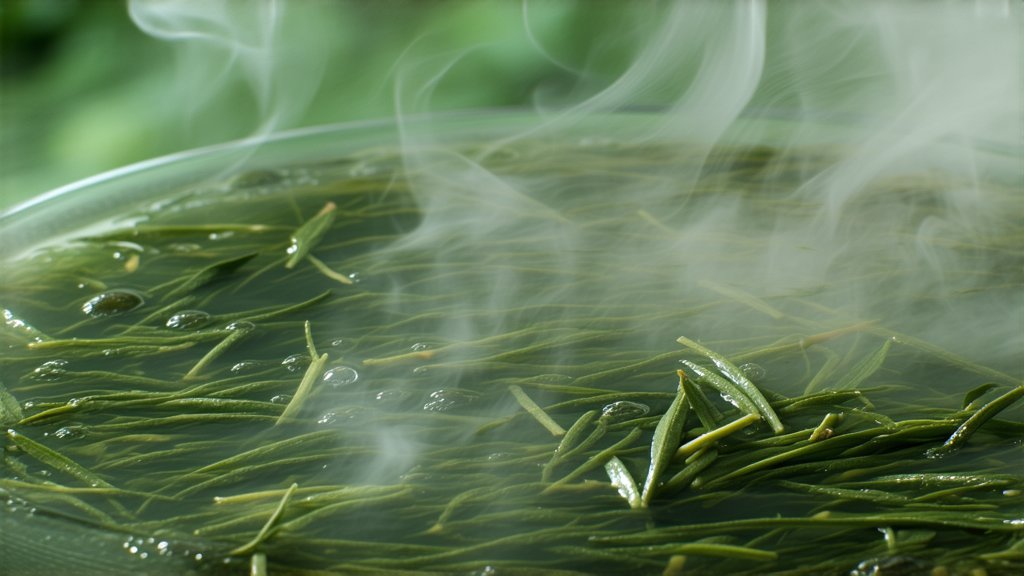
Dragon Well Tea, also known as Longjing (龙井), is not just a beverage; it is a testament to the rich tapestry of Chinese tea culture and history. Nestled in the lush hills surrounding the picturesque West Lake in Hangzhou, Zhejiang Province, this premier green tea has captivated tea enthusiasts for centuries with its delicate flavor, aromatic fragrance, and graceful appearance. In this exploration, we delve into the historical roots, varieties, meticulous craftsmanship, and the art of appreciating Dragon Well Tea.
Historical Origins
The story of Dragon Well Tea dates back over a thousand years, with its origins intertwined with legends and imperial favor. According to ancient lore, during the Tang Dynasty (618–907 AD), a sacred dragon descended from the heavens and circled above the West Lake area before diving into a well. This well, now known as the Dragon Well, became the source of inspiration for the name of this exquisite tea.
By the Song Dynasty (960–1279 AD), Dragon Well Tea had already gained recognition for its superior quality. It was during the Qing Dynasty (1644–1912) that Dragon Well Tea truly flourished, becoming a staple in the imperial court and a symbol of sophistication and elegance. Today, it stands as one of China's most revered and internationally acclaimed green teas.
Varieties of Dragon Well Tea
Dragon Well Tea encompasses several distinct varieties, each with its own unique characteristics. The primary classifications are based on the time of harvest: Pre-Qingming (before April 5th), Qingming (April 5th to April 20th), and Post-Qingming (after April 20th). Among these, Pre-Qingming teas are considered the finest due to their tender leaves and early seasonal growth, which contribute to their exceptional flavor profile.
Another notable variety is the "Xue Ya," or Snow Sprout, harvested during the first frost of winter. These leaves are covered in a fine layer of frost, giving them a distinctive appearance and a slightly sweeter taste compared to other Dragon Well Teas.
Craftsmanship: The Art of Hand-Fanning
The production of Dragon Well Tea is an artisanal process that demands precision, skill, and dedication. The journey begins with the careful selection of tea plants, specifically those of the Camellia sinensis var. sinensis species. The leaves plucked during the prime seasons are then subjected to a series of intricate steps to preserve their natural essence and enhance their flavor.
One of the hallmark techniques in crafting Dragon Well Tea is the hand-fanning method. After initial steaming or pan-firing to halt oxidation, skilled artisans use large, flat pans heated to varying temperatures. With deft hands, they toss and turn the leaves, ensuring even heating while shaping them into their iconic flat and needle-like form. This process not only imparts a unique visual appeal but also enhances the tea's aroma and taste.
The final step involves roasting the tea leaves over charcoal fires, a traditional method that adds depth and complexity to the flavor profile. This meticulous attention to detail results in a tea that is both visually stunning and sensorially delightful.
The Art of Appreciating Dragon Well Tea
To fully appreciate Dragon Well Tea, one must engage in the ritual of Gongfu Cha, or "the way of tea." This practice emphasizes mindfulness, respect for the tea, and an appreciation for its subtle nuances. Here's a guide to savoring this exquisite brew:
-
Preparation: Begin by selecting a high-quality Yixing clay teapot or a glass vessel to allow for visual appreciation. Rinse the teapot with hot water to warm it up.
-
Measurement: Use approximately 3 grams of Dragon Well Tea leaves per 150 milliliters of water. This ratio ensures a balanced infusion that highlights the tea's delicate flavors without overwhelming them.
-
Water Quality: Use fresh, spring water heated to around 80°C (176°F). Overheating can scald the leaves, leading to a bitter taste.
-
Steeping: Gently pour the hot water over the茶叶 leaves, allowing them to unfurl gracefully. The first infusion should be short, around 30 seconds, to cleanse the leaves. Subsequent steepings can range from 1 to 2 minutes, depending on personal preference.
-
Observation: As the leaves dance in the water, observe their transformation from tight buds to vibrant green tendrils. Notice the color and clarity of the liquor, which should be a pale jade hue.
-
Aroma: Inhale deeply to capture the subtle fragrance of Dragon Well Tea, often described as a blend of floral notes, grassy undertones, and a hint of chestnut.
-
Tasting: Take small sips, allowing the tea to coat your palate. Notice the initial sweetness followed by a lingering umami finish. The texture should be smooth and silky, with no astringency.
-
Reflection: Take a moment to reflect on the experience, appreciating not just the taste but also the cultural heritage and craftsmanship embedded in every cup.
In conclusion, Dragon Well Tea is more than just a drink; it is a journey through time and tradition, a celebration of nature's bounty, and an invitation to slow down and savor life's simple pleasures. Whether you are a seasoned tea connoisseur or a curious newcomer, Dragon Well Tea offers a window into the soul of Chinese tea culture, inviting you to explore its depths and discover its enchantment.